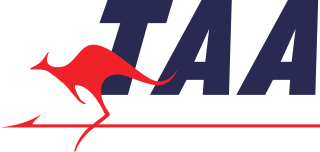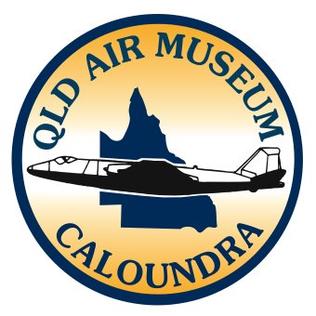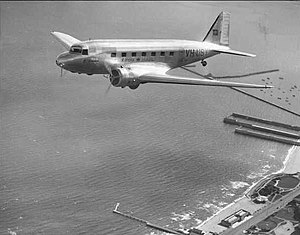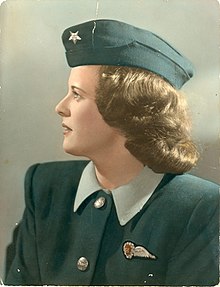
Trans Australia Airlines (TAA), renamed Australian Airlines in 1986, was one of the two major Australian domestic airlines between its inception in 1946 and its merger with Qantas in September 1992. As a result of the "COBRA" project, the entire airline was rebranded Qantas about a year later with tickets stating in small print "Australian Airlines Limited trading as Qantas Airways Limited" until the adoption of a single Air Operator Certificate a few years later. At that point, the entire airline was officially renamed "Qantas Airways Limited" continuing the name and livery of the parent company with the only change being the change of by-line from "The Spirit of Australia" to "The Australian Airline" under the window line with the existing "Qantas" title appearing above.

Ansett Australia was a major Australian airline group, based in Melbourne, Victoria. The airline flew domestically within Australia and from the 1990s to destinations in Asia. After operating for 65 years, the airline was placed into administration in 2001 following a financial collapse and subsequent organised liquidation in 2002, subject to deed of company arrangement. The last flight touched down on 5 March 2002.
This is a list of aviation-related events from 1934:

The de Havilland Express, also known as the de Havilland D.H.86, was a four-engined passenger aircraft manufactured by the de Havilland Aircraft Company between 1934 and 1937.
Air Niugini Limited is the flag carrier of Papua New Guinea, based in Air Niugini House on the site of Port Moresby International Airport, Port Moresby. It operates a domestic network from Port Moresby to 12 major airports while its subsidiary company, Link PNG, operates routes to minor airports. It also operates international services in Asia, Oceania, and Australia on a weekly basis. Its main base is Port Moresby International Airport, which is located in 7 Mile, Port Moresby, Papua New Guinea. Niugini is the Tok Pisin word for New Guinea.

Essendon Fields Airport, colloquially known by its former name Essendon Airport, is a 305 ha public airport serving scheduled commercial, corporate-jet, charter and general aviation flights. It is located next to the intersection of the Tullamarine and Calder Freeways, in the north western suburb of Essendon Fields of Melbourne, Victoria, Australia. The airport is the closest to Melbourne's City Centre, approximately an 11 km (6.8 mi) drive north-west from it and 8 km (5.0 mi) south-east from Melbourne–Tullamarine Airport. In 1970, Tullamarine Airport replaced Essendon as Melbourne's main airport.

Sir Reginald Myles Ansett KBE was an Australian businessman and aviator. He was best known for founding Ansett Transport Industries, which owned one of Australia's two leading domestic airlines between 1957 and 2001. He also established a number of other business enterprises including Ansett Pioneer coachlines, Ansett Freight Express, Ansair coachbuilders, Gateway Hotels, Diners Club Australia, Biro Bic Australia and the ATV-0 television station in Melbourne and TVQ-0 in Brisbane which later became part of Network Ten. ATI also bought out Avis Rent a Car and had a 49% interest in Associated Securities Limited (ASL). In late 1979, mainly due to the collapse of ASL, Ansett lost control of the company to Peter Abeles of TNT and Rupert Murdoch of News Corporation who became joint managing directors.

MacRobertson Miller Airlines (MMA) was a Western Australian airline that operated between 1927 and 1993. After being purchased by Ansett Transport Industries in 1968, it was eventually rebranded Ansett WA.

On 26 June 1950, a Douglas DC-4 Skymaster aircraft departed from Perth, Western Australia, for an eight-hour flight to Adelaide, South Australia. It crashed 22 minutes after take-off, 35 miles (56 km) east of Perth Airport. All 29 occupants were killed in the accident; one initially survived, but died six days later. It was the worst civil aviation accident in Australia.

Air Queensland, formerly Bush Pilots Airways, was an Australian airline which operated from 1951 until 1988.
South Pacific Airlines of New Zealand was a New Zealand airline, operating between 1960 and 1966. It is regarded as a forerunner to Ansett New Zealand.

Burnie Airport, also called Burnie Wynyard Airport or Wynyard Airport, is a regional airport located adjacent to the town of Wynyard, about 17 kilometres (11 mi) west from Burnie, Tasmania, Australia. Formally named the Wynyard Aerodrome, the first official opening occurred on 26 February 1934. The Burnie Airport is majority owned by the Burnie City Council.

Australian National Airways, Ltd. (ANA) was a short-lived Australian airline, founded on 3 January 1929 by Charles Kingsford Smith and Charles Ulm.
The Two Airlines Policy was a policy of the Government of Australia from the late 1940s to the 1990s. Under the policy, only two airlines were allowed to operate flights between state capital cities and between capitals and nominated regional centres. The Two Airlines Policy was a legal barrier to new entrants to the Australian aviation market. It restricted intercapital services to the two major domestic carriers. This anti-competitive arrangement ensured that they carried approximately the same number of passengers, charged the same fares and had similar fleet sizes and equipment.
Airlines of New South Wales callsign "NEWSOUTH" was an Australian domestic regional airline that operated from 1959 until its merger into Ansett in 1993. It was formed by Reg Ansett's takeover of Butler Air Transport. Airlines of New South Wales operated air passenger services in New South Wales, and later in other Australian states. In 1964–65 the airline fought a High Court case, Airlines of New South Wales Pty Ltd v New South Wales, that was significant in adjudicating the spheres of constitutional power of the national and state governments in respect of air navigation.
Butler Air Transport was an Australian airline founded by C. Arthur Butler to operate air transport primarily among New South Wales airports in Australia, from 1934 until 1959.

On the evening of 30 November 1961, Ansett-ANA Flight 325, a service from Sydney to Canberra, Australia, operated by a Vickers Viscount 720, broke up in mid-air and crashed shortly after takeoff, when it encountered a severe thunderstorm. All 15 people on board were killed.

The Queensland Air Museum is a not-for-profit community-owned aviation museum located at Caloundra Airport in Queensland, Australia. Its mission is to collect and preserve all aspects of aviation heritage with an emphasis on Australia and Queensland. The museum has the largest collection of historical aircraft in Queensland and it also has a large collection of aircraft engines, equipment, artefacts, photographs and books.

Aviation in Australia began in 1920 with the formation of Qantas, which became the flag carrier of Australia. The Australian National Airways (ANA) was the predominant domestic carrier from the mid-1930s to the early 1950s. After World War II, Qantas was nationalised and its domestic operations were transferred to Trans Australia Airlines (TAA) in 1946. The Two Airlines Policy was formally established in 1952 to ensure the viability of both airlines. However, ANA's leadership was quickly eroded by TAA, and it was acquired by Ansett Transport Industries in 1957. The duopoly continued for the next four decades. In the mid-1990s TAA was merged with Qantas and later privatised. Ansett collapsed in September 2001. In the following years, Virgin Australia became a challenger to Qantas. Both companies launched low-cost subsidiaries Jetstar and Tigerair Australia, respectively.


















